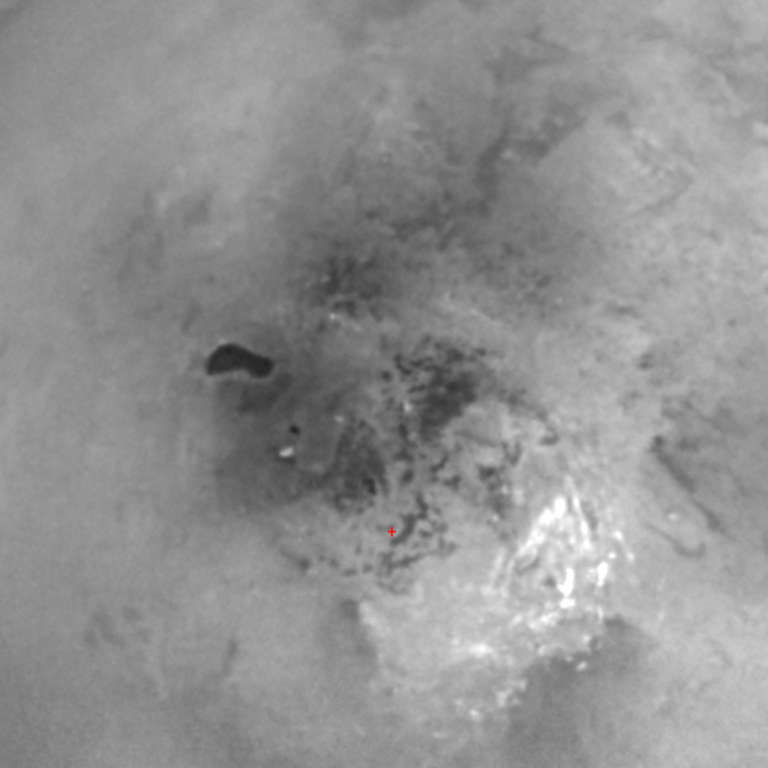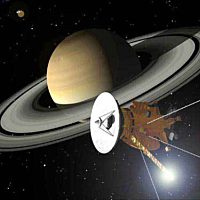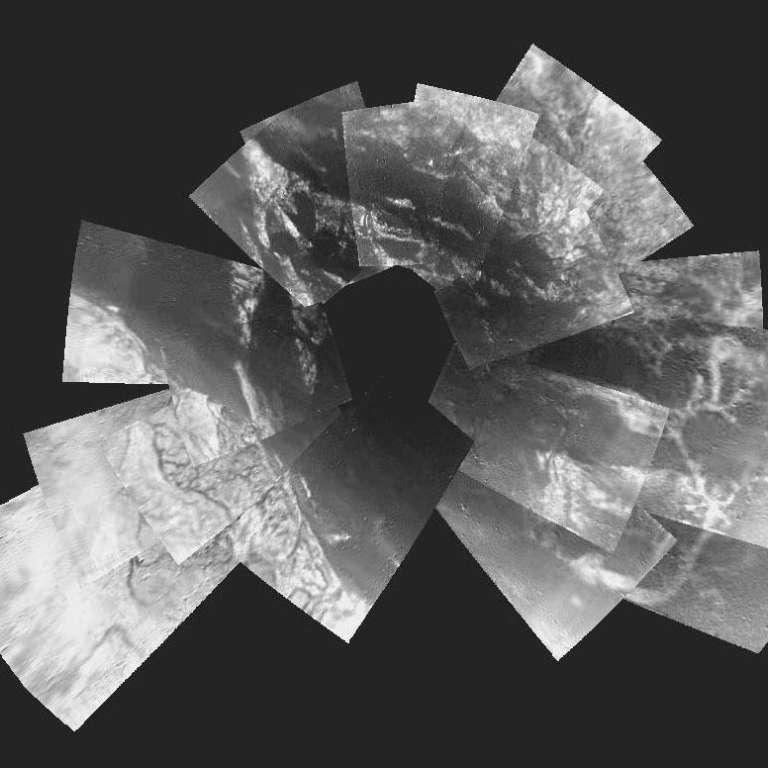All
All
Stories, updates, insights, and original analysis from The Planetary Society.
News: Dark Spot Near the South Pole: A Candidate Lake on Titan?
The Cassini imaging team has released an image containing a feature unlike any other that they have seen on Titan. The very dark color, curvaceous outline, and sharp edge of the feature have led them to the conclusion that it could well be the long-theorized but never-before-seen body of liquid hydrocarbons on the surface of Titan.
A couple of pics from Cassini at periapsis
Cassini's been in orbit around Saturn for almost exactly a year now, and the mission seems pretty much to have dropped off of the public radar screen. But there's still three years to go on the primary mission, and lots left to do, and I for one am not at all bored.
MESSENGER Snaps Earth-Moon Image in Approach to First Flyby
As MESSENGER began its approach for its August 2 flyby of Earth, its cameras have snapped their first images. The images clearly show a cloudy Earth—and, to scientists' surprise, the Moon as well.
Martian Orbiter Takes Pictures of Neighboring Crafts Passing By
During April 2005, the Mars Global Surveyor happened to pass relatively close to Odyssey and Mars Express. What resulted were remarkably clear pictures of human-made spacecraft orbiting and alien world.
New Mosaics of Huygens' Titan Images
Although the two spacecraft traveled a billion kilometers together to study Titan, Cassini and Huygens are two very different types of missions.
Astronomers Revise Torino Scale Asteroid Advisory System
Astronomers have revised the Torino scale, the color-coded advisory system to assess the threat of asteroids and other near-Earth objects (NEOs) to make it easier for the public to understand.
Pluto: The Discovery of a Planet
To mark the 75th anniversary of the discovery of the planet Pluto, The Planetary Society presents to its readers the remarkable story of the discovery.
The Discovery of a Planet, Part 6: From Pluto to Sedna
74 years after Clyde Tombaugh discovered Pluto as a faint dot on a pair of photographic plates, a modern group of astronomers made another remarkable discovery. On March 15, 2004, Michael Brown of Caltech, Chad Trujillo of the Gemini Observatory, and David Rabinowitz of Yale announced the discovery of Sedna – the furthest object ever detected in the Solar System.
The Discovery of a Planet, Part 5: The Aftermath
The discovery of Planet X was announced to the world on March 13, 1930, which marked the anniversary of William Herschel’s discovery of Uranus in 1781 as well as Percival Lowell’s birthday. The observatory’s communiqué emphasized that the discovery was no coincidence, but the vindication of Lowell’s predictions made years before.
The Discovery of a Planet, Part 4: Clyde's Search
Since his teenage years Clyde Tombaugh had been an avid amateur astronomer and a gifted telescope builder. Based on instructions contained in an article from a boy’s Sunday school paper, he built a series of telescopes of increasing power and quality on the family farm.
Cassini's Radio Ear on Huygens
Scientists have released a new sound from Huygens, representing the radio signal that Cassini detected from the little probe as it descended to Titan's surface.
The Discovery of a Planet, Part 3: Planet X
The discovery of Neptune accounted for nearly all the unexplained motions of the outer planets of the Solar System. Nevertheless, several astronomers insisted that some unexplained residual motions remained, pointing to the presence of a ninth planet beyond the orbit of Neptune.
The Discovery of a Planet, Part 2: Out of the Six-Planet World
Since humans first set their eyes to the stars, they noticed that a few of these bright objects behaved differently from the others. Whereas all the stars moved together, revolving around the Earth once every 24 hours, five appeared to move within the firmament among the other stars. Accordingly, they were named “planets,” meaning “wanderers” in Greek.
The Discovery of a Planet, Part 1: The Blinking Image
February 18, 1930, was a cloudy day at the Lowell Observatory, on top of Mars Hill in Flagstaff, Arizona. 22 year old Clyde Tombaugh was hard at work, peering through the lens of an ancient-looking brass-colored device. The instrument, known as a “blink comparator,” mounted two large photographic plates.
News: Radio Astronomers Rescue Science Results for Huygens' Doppler Wind Experiment
Earth's radio astronomers have saved the day for one of the Huygens instrument teams. Today, the Doppler Wind Experiment (DWE) team announced their first science results, despite losing nearly all of their expected data.
3-D Views of Titan's Surface from Huygens
It's been close to a month since Huygens descended to the surface of Titan. Many visitors to this website have expressed impatience with the pace of the release of images from the Huygens cameras, a feeling that is no doubt shared by space enthusiasts around the world who are eager to see refined views of the alien surface of Titan.
They Were the First, and the Last, to Hear from Huygens
On January 14, 2005, the eyes of the world were on the European Space Operations Centre in Darmstadt, Germany, where Huygens mission operators were anxiously awaiting news from Huygens. Would the little probe -- a mission built in seventeen countries, more than twenty years in the making -- be a success, or would it prove a repeat of the heartbreaking silence of Beagle 2?
Huygens' Descending View of Titan
Scientists from the Huygens Descent Imager Spectral Radiometer (DISR) team have released their first mosaic of images captured during Huygens' descent. The mosaic is composed of 30 images captured by the Medium Resolution Imager of Huygens' Descent Imager Spectral Radiometer while the probe was spinning and descending toward Titan.
Raw Images from Huygens
In the 48 hours since Huygens' data first began streaming back to Earth, a few processed images of the channeled landscape and bouldery landing site have been released to the public. Now, the Descent Imager Spectral Radiometer team at the University of Arizona has put all of Huygens' images online for the public to view.
Huygens blog: "It's impossible to resist the speculation."
After a mere twelve hours of work, all six of the science teams on Huygens were able to report results this morning. You could easily tell the difference between the administrators and the scientists on this morning's press panel: the administrators looked bright, fresh, and well-rested, while the scientists looked decidedly weary.


 Explore Worlds
Explore Worlds Find Life
Find Life Defend Earth
Defend Earth


 Sun
Sun Mercury
Mercury Venus
Venus Earth
Earth Mars
Mars Jupiter
Jupiter Saturn
Saturn Uranus
Uranus Neptune
Neptune Small Bodies
Small Bodies






